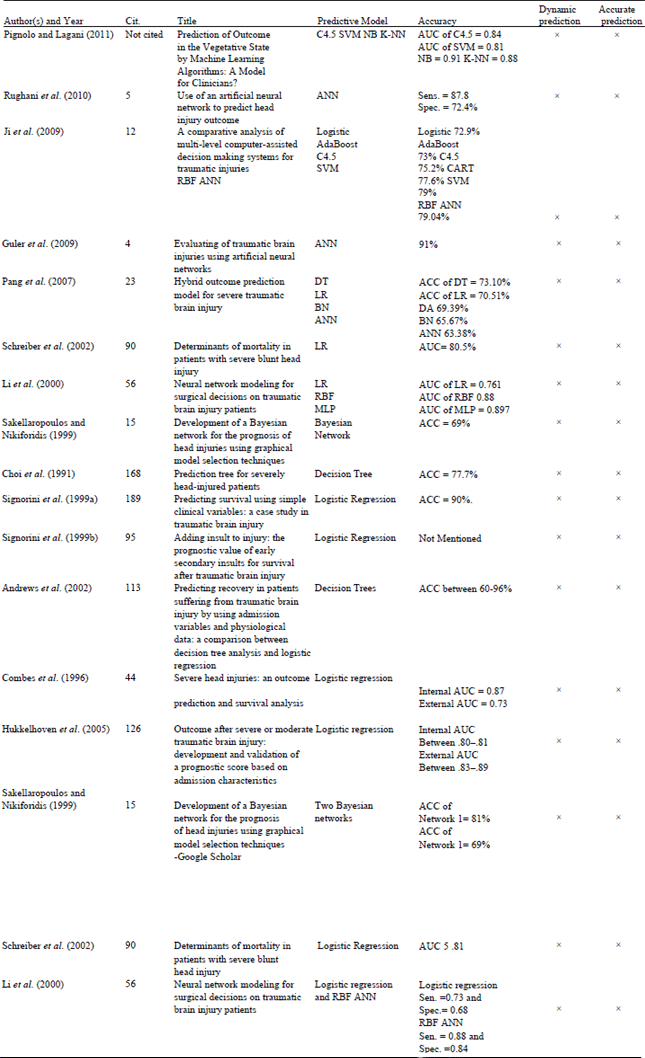Research Article
A Critical Review for an Accurate and Dynamic Prediction for the Outcomes of Traumatic Brain Injury based on Glasgow Outcome Scale
Department of Medical Science Technology, Faculty of Applied Medical Science, Majmaah University, Kingdom of Saudi Arabia
Abdul Hannan Abdullah
Department of Medical Science Technology, Faculty of Applied Medical Science, Majmaah University, Kingdom of Saudi Arabia
Mohammed Al Jumah
King Abdullah International Medical Research Center, P.O. Box 22490, Riyadh 11426, Saudi Arabia









